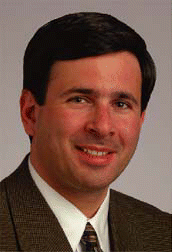We can categorize those factors broadly as sampling technique and processing technique, Dr. Hwang said. In terms of sampling, there are a number of ways to obtain samples from the nose. You can swab the nose, you can irrigate, you can suction or you can puncture and aspirate.
Explore This Issue
November 2006Probably the most common ways of obtaining cultures in the office are either a swab or an aspiration, and studies have shown that the two techniques are basically equivalent in their yield.
Some of the more recent fungal data has used irrigation to harvest nasal mucin and to evaluate that microbiologically, Dr. Hwang said. Indeed, if you irrigate the nose, you can obtain a higher yield than swabs. But you need to consider the fact that this is non-localized sampling, so you’re sampling the entire nasal cavity when you might be interested in a more specific anatomic site, which may be better achieved by swabbing.
Another issue in sampling is that of contamination. We’re all aware that the nasal vestibule harbors different bacteria than the nasal cavity and can contaminate our specimens, he said. There have been some proposed modifications of technique in order to minimize contamination-either to sterilely prep the nasal vestibule or to use the tip of the nasal endoscope to lateralize the ala, which minimizes the contact between the swab or the suction tip and the nasal vestibule.
Moving from sampling to processing, Dr. Hwang said there are some processing issues to consider once the specimen has been harvested.
First of all, the type of cultured media matters. In addition, how the media is prepared for culture does matter, he said. The Mayo group showed that they could obtain a much higher yield on their fungal cultures when they applied a mucolytic technique prior to plating their nasal mucin. They were able to achieve up to a 96 percent yield.
Transport time to the lab is also significant processing factor that might affect the yield, Dr. Hwang pointed out, particularly if cultures sit out for a long period of time before they’re actually plated and processed.
Innovations in Pathogen Identification
While polymerase chain reaction (PCR) has moved from bench to bedside, it’s not widely available in terms of routine bacterial identification.
We do, however, have quite a bit of research that shows that we can use PCR as a very sensitive tool for the identification of both bacteria and fungi, Dr. Hwang said. By going directly to the genetic material, we can avoid many of the technical errors that may be associated with culture technique, and it has been shown to be highly sensitive.

Leave a Reply